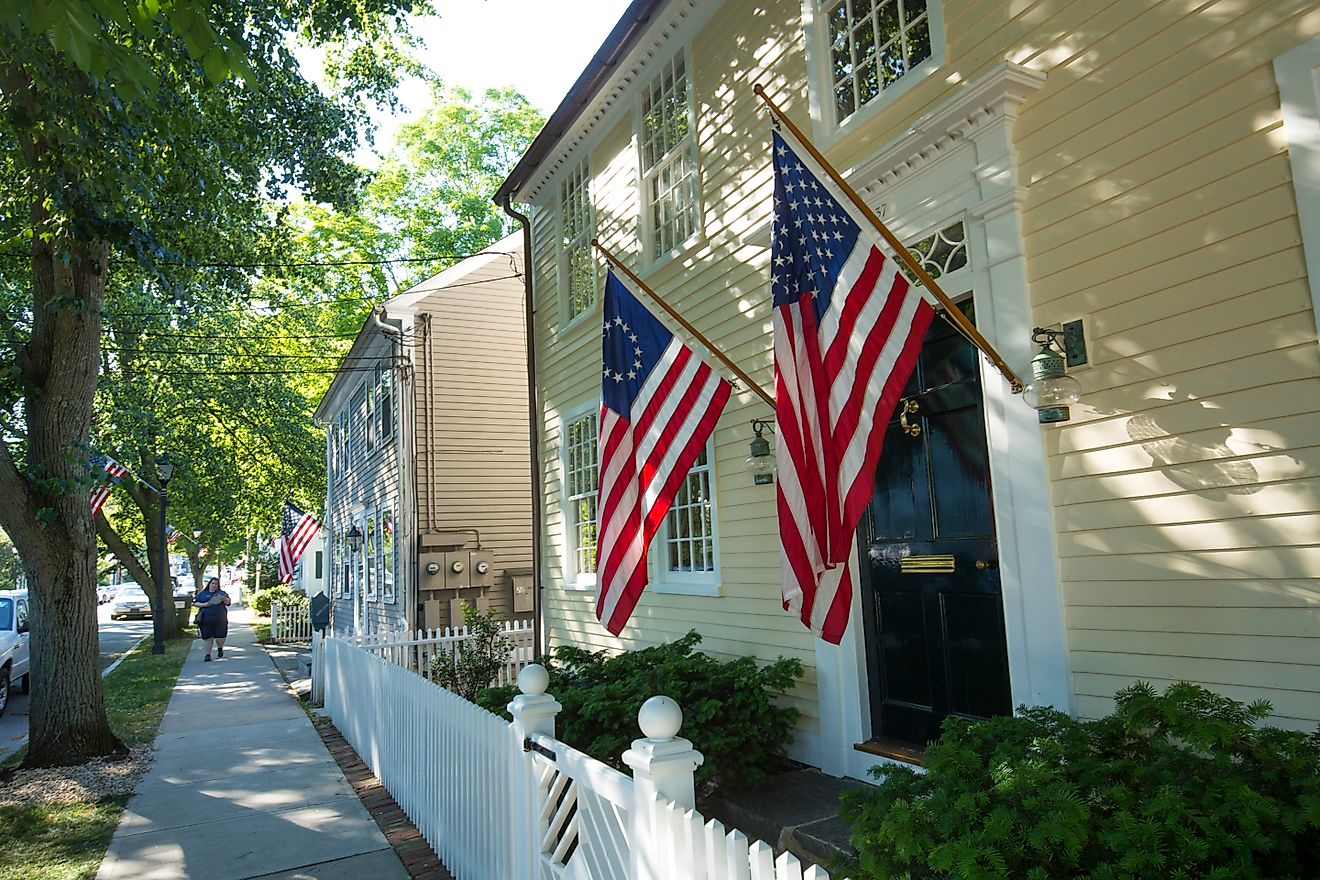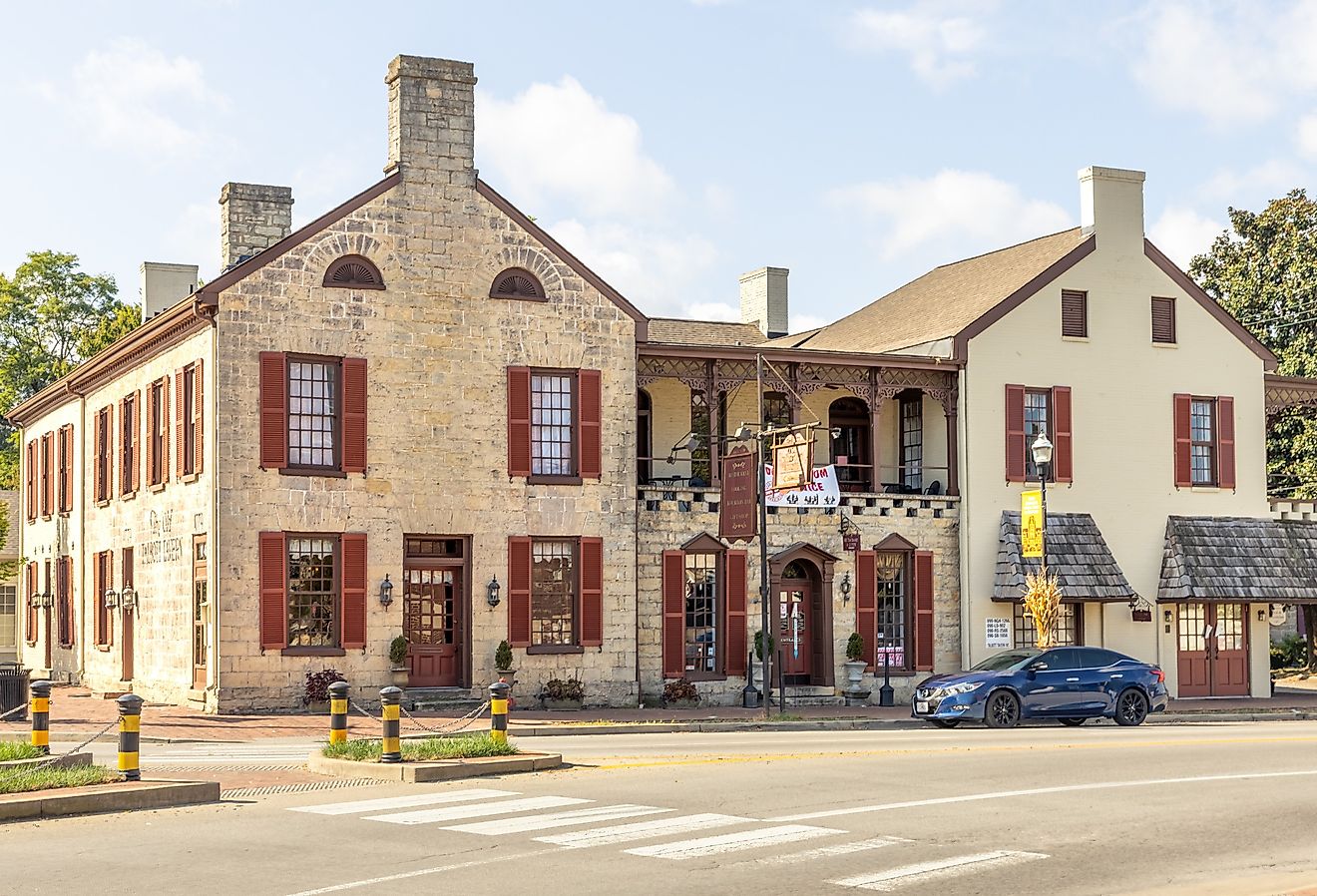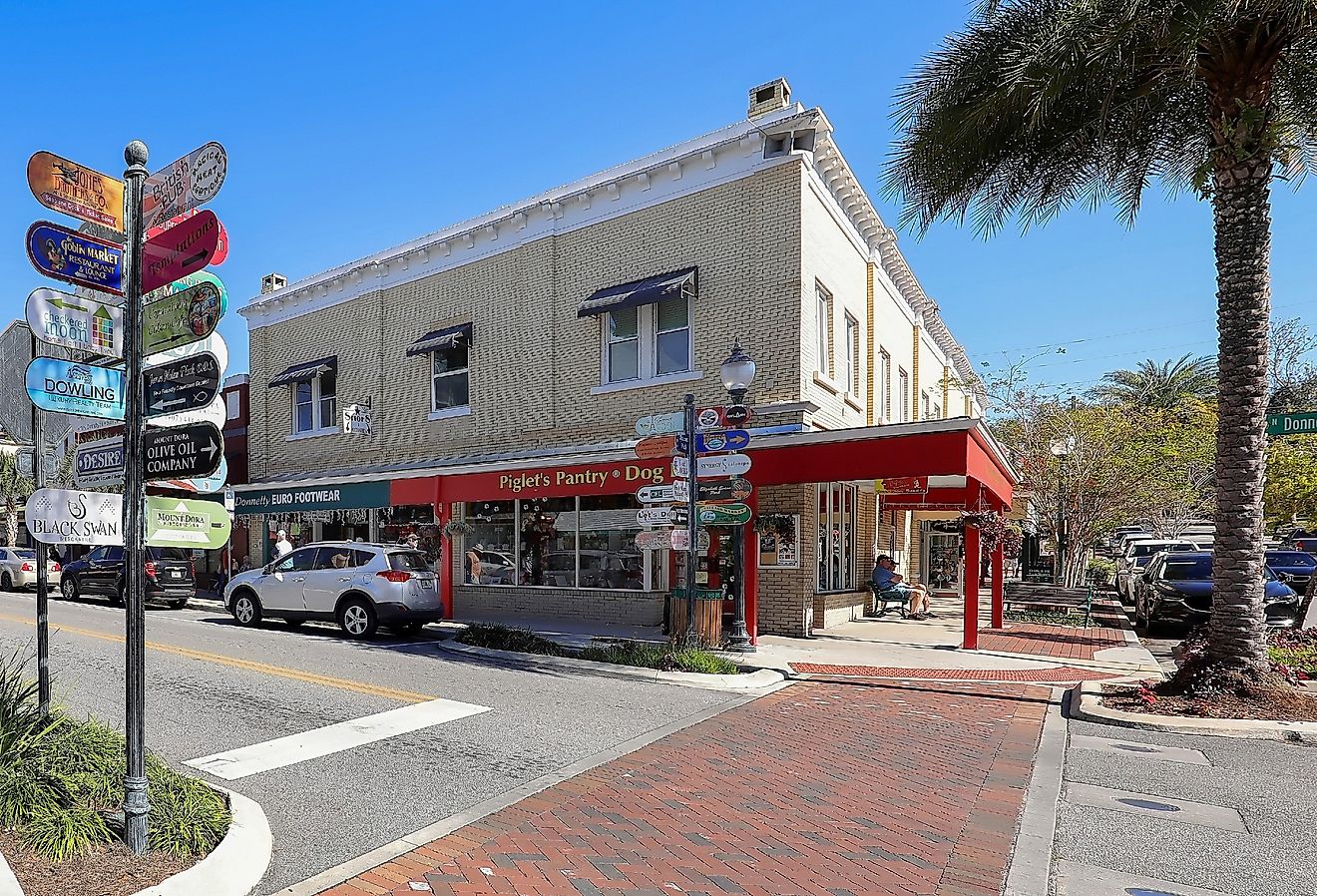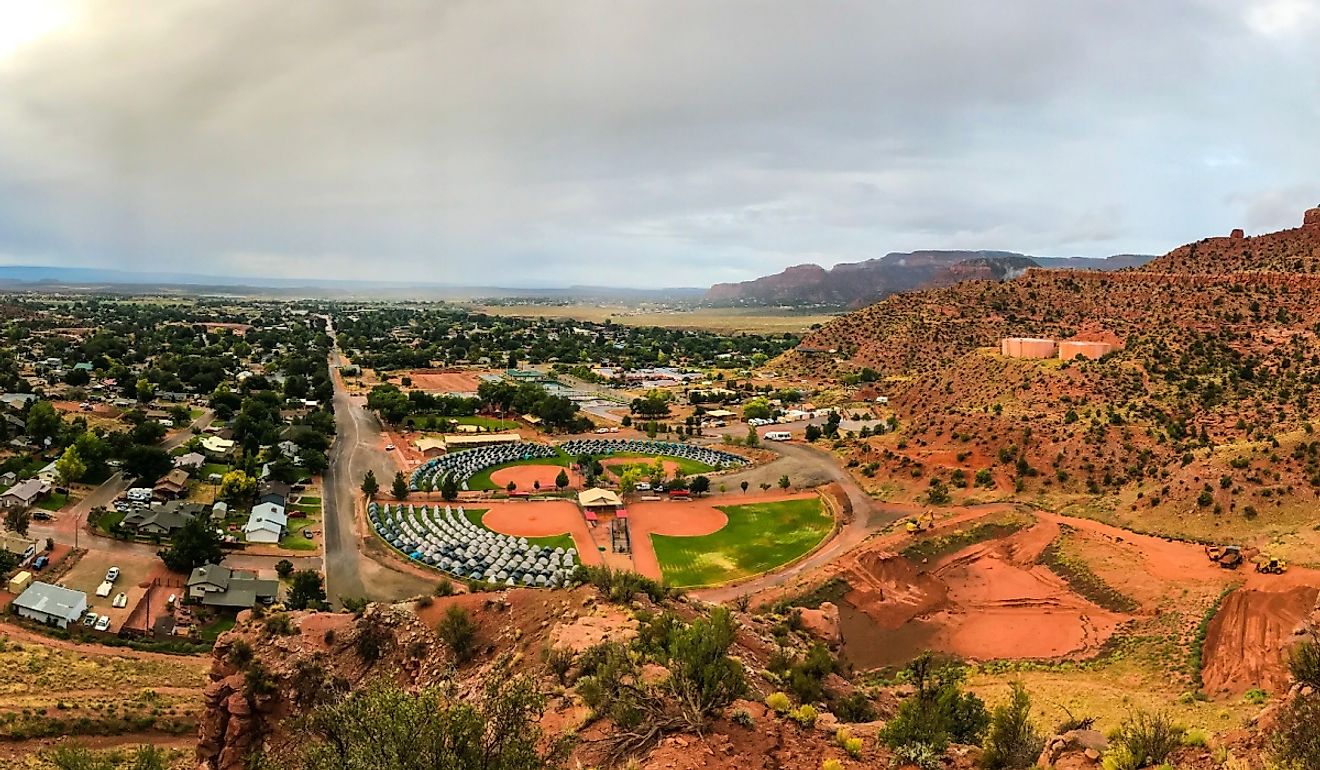
7 Must-See Historic Towns in Rhode Island
Rhode Island has a unique origin and story standing out in the greater American tale.
In 1636, Roger Williams founded the colony of Rhode Island after his banishment from the Massachusetts Bay Colony for his beliefs about religion. He was looking for religious freedom and advocated for the separation of church and state.
Years later, it would be the first future colony to declare its independence from British rule and was one of the first 13 states.
Rhode Island's passion for religious freedom greatly influenced America's ideals and the creation of the nation's Constitution.
Despite being the smallest state, Rhode Island holds many significant historical stories within its compact borders.
Keep reading to discover seven historic towns in Rhode Island you have to visit.
Newport

Feel like experiencing the Gilded Age in the present day? Head to Newport. This place is packed with mind-blowing, grand houses built back in the day by America's wealthiest families.
These grand homes, such as The Breakers, sometimes known as summer "cottages," were anything but tiny or plain. Today, they showcase stunning designs and allow a glimpse into the luxurious lifestyle of the past.
Newport's historic section is full of stunning buildings that have been around since colonial times. It is known for having a lot of historic buildings packed into it, with some from the 1600s.
Fort Adams is a fascinating place located next to the ocean. It was important for keeping the country safe and stood as one of the largest military areas in the US.
It was built from 1824 to 1857 and stayed active until World War II ended. Today, it's a state park that everyone can visit, known for its breathtaking sights of Narragansett Bay.
East Greenwich

East Greenwich is a small town in Kent County, known for its deep roots going all the way back to colonial times, with a plethora of historic places and old buildings to see.
The East Greenwich Historic District covers a large part of the original town area, with a collection of centuries-old structures, still retaining their rustic allure.
Goddard Memorial State Park is a sprawling park in the town that belonged to Robert H.I. Goddard's family, well-known in Rhode Island. This place is full of natural beauty and has much heritage to experience, such as the ruins of the Goddard Mansion and an old-fashioned carousel.
If you are visiting, check out the Varnum House Museum, an old 1773 house where General James Mitchell Varnum lived. He fought in the American Revolutionary War, and now the museum teaches you all about this icon from Rhode Island's history.
Portsmouth

Portsmouth was founded in 1638 by people seeking to freely practice their religion.
Many years later, during the American Revolutionary War, Portsmouth was a key location for the Battle of Rhode Island in 1778. It was part of the first attempted coordinated operation between the French and American forces.
Butts Hill Fort stands out as the biggest fort built during the Revolutionary War era, still standing in Rhode Island.
The Union Church, constructed in 1820, is a significant piece of the town's past. This bold, white-painted church welcomed different religious communities, highlighting Portsmouth's early embrace of diverse faiths.
Visitors should check out the Prudence Island Lighthouse too. Known to some as Sandy Point Lighthouse, this beacon has been helping sailors find their way since it first lit up in 1823.
Westerly
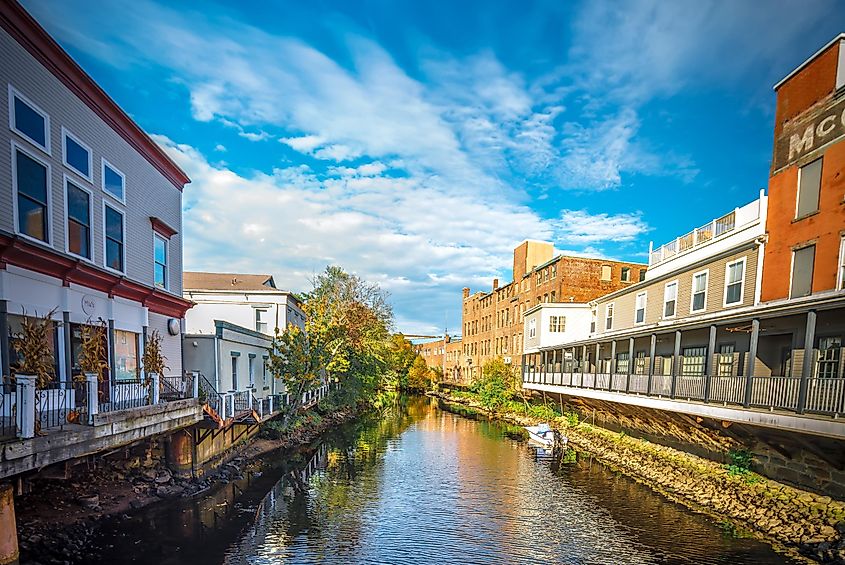
Do you want history? Think bigger, like the Ice Age.
Westerly has a unique position on top of a glacial moraine, including a collection of small hills made by glaciers moving back during the last Ice Age.
Westerly, founded in 1669, sits in Rhode Island's southwest tip, right next to Connecticut and the vast Atlantic Ocean.
To really dive into history in this area, head over to the Avondale Historic District. Situated in Westerly, Avondale is celebrated for its rich heritage connected to the sea.
Watch Hill is a well-known place, cherished for its classic summer getaway spots that go way back to the 1800s.
It is home to a memorable lighthouse and the Flying Horse Carousel, one of the oldest still operating carousels in America.
Wickford Village

Wickford Village is acclaimed for its pristine colonial buildings and is one of the oldest villages from colonial times in the United States.
A beautiful stop in town is the Updike Park, named after Lodowick Updike, who laid out the village in the early 18th century. This quiet green spot is perfect for kicking back and thinking about the town's past.
The Old Narragansett Church stands out with its square, white facade. It was built in 1707, becoming one of America's earliest Episcopal churches.
Near the water in the village, Wickford Cove is a stunning location that highlights the ocean's significant role in Wickford’s history.
Smith's Castle, created in 1678, is known for its rich and complicated story. It evolved from a trading post to a significant slave-holding plantation. Now, it serves as a museum, teaching the good and bad about its past.
Bristol
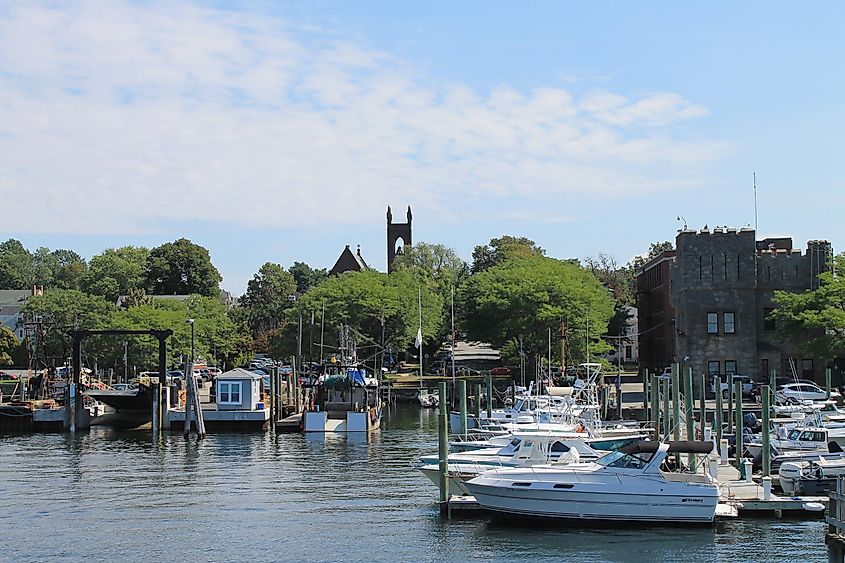
Like Fireworks? Bristol is home to the longest-running Fourth of July party in the entire country. This first kicked off in 1785 and is still going strong today.
Bristol's past is deeply connected with the sea, and, for centuries, was a key location for shipbuilding.
You can feel this storied heritage today along the waterfront, where old shipyards and signs of its boat-building past still remain.
There is also the Herreshoff Marine Museum in Bristol, which honors the town's history of making ships and displays the Herreshoff yachts.
Make sure to see Colt State Park while in town. Named after industrialist Samuel P. Colt, the park is often referred to as a gem of the Rhode Island State Parks system.
This park lends out views of Narragansett Bay and features manicured lawns, stone walls, and curving drives along the waterfront.
Warren
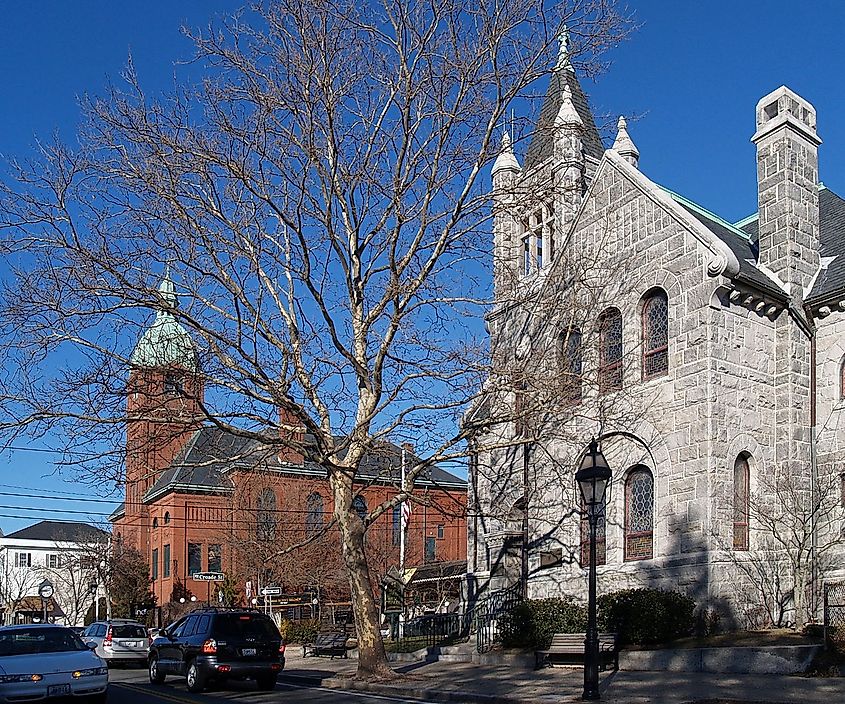
Warren has a pretty waterfront, old-style buildings, and a lively sense of community.
At Burr's Hill Park Archaeological Site, which was a Native American burial site, digs have found tons of priceless artifacts. These finds help historians learn about the Native peoples who lived here long ago.
The Warren Town Wharf has places to eat and shop, but back in the day, Warren was known for making ships and hunting whales.
There is a Maxwell House in Warren, but do not mix it up with the coffee brand. The Maxwell House in Warren is an important historical spot from the 1700s.
The Warren Armory is an iconic building from the 19th century and was used once as a place where soldiers could train and acted as a hub for community events. It is hard to miss with its prominent battlements.
Rhode Island, the smallest state, holds a large place in American history, embodying the spirit of independence and cultural richness.
Its foundation, based on principles of religious freedom and separation of church and state, set a bold precedent.
Yet, the state's story extends far beyond this, with towns reflecting the opulence of the Gilded Age, their maritime heritage, and the state's colonial roots.
From Newport's grand cottages to Bristol's maritime legacy and the quaint charm of East Greenwich, Rhode Island's diverse past mirrors the evolution of America itself.
It might be small, but get ready for a big adventure with a lot to learn when you come visit Rhode Island.
